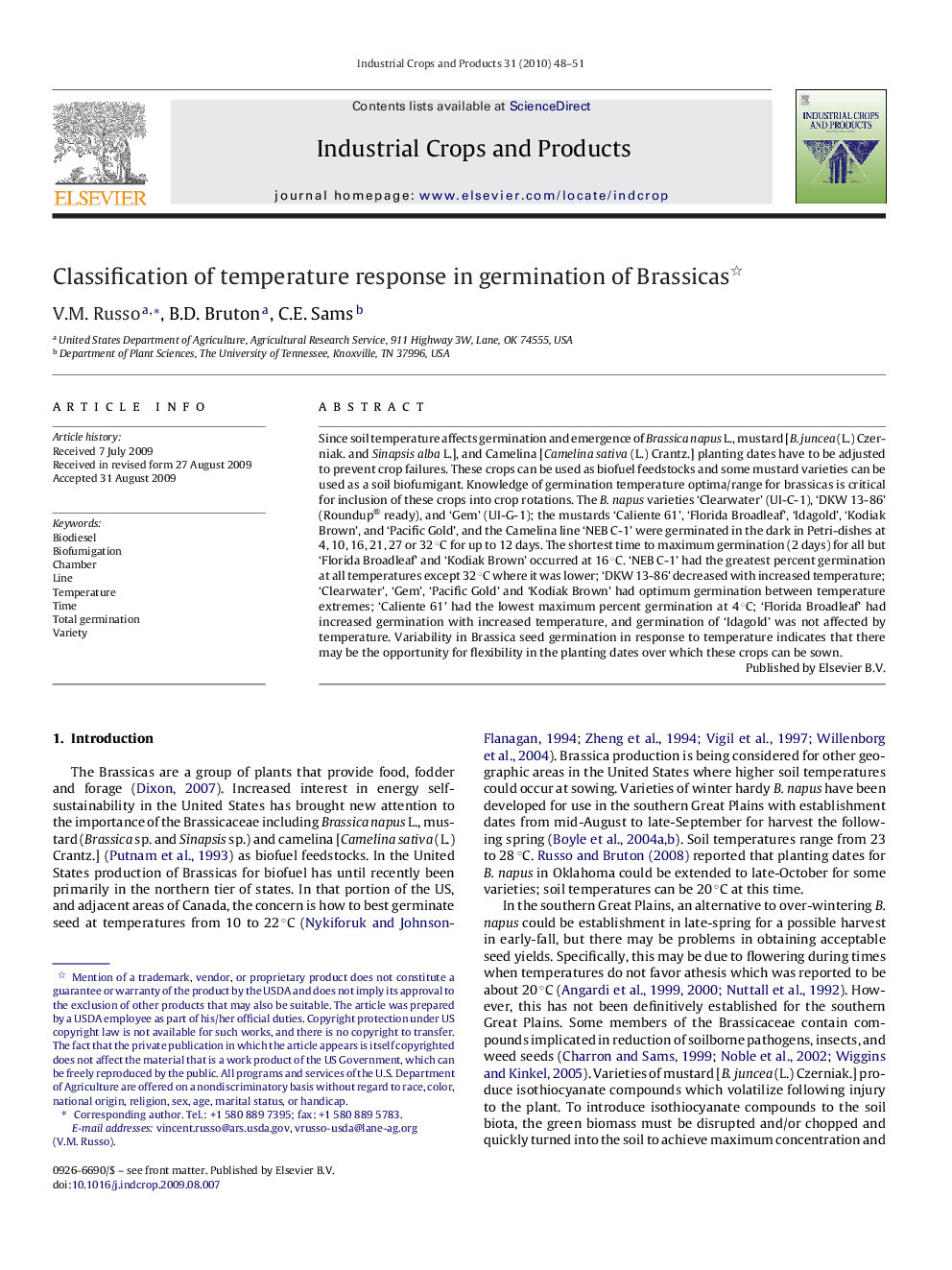| Article ID | Journal | Published Year | Pages | File Type |
|---|---|---|---|---|
| 4514890 | Industrial Crops and Products | 2010 | 4 Pages |
Since soil temperature affects germination and emergence of Brassica napus L., mustard [B. juncea (L.) Czerniak. and Sinapsis alba L.], and Camelina [Camelina sativa (L.) Crantz.] planting dates have to be adjusted to prevent crop failures. These crops can be used as biofuel feedstocks and some mustard varieties can be used as a soil biofumigant. Knowledge of germination temperature optima/range for brassicas is critical for inclusion of these crops into crop rotations. The B. napus varieties ‘Clearwater’ (UI-C-1), ‘DKW 13-86’ (Roundup® ready), and ‘Gem’ (UI-G-1); the mustards ‘Caliente 61’, ‘Florida Broadleaf’, ‘Idagold’, ‘Kodiak Brown’, and ‘Pacific Gold’, and the Camelina line ‘NEB C-1’ were germinated in the dark in Petri-dishes at 4, 10, 16, 21, 27 or 32 °C for up to 12 days. The shortest time to maximum germination (2 days) for all but ‘Florida Broadleaf’ and ‘Kodiak Brown’ occurred at 16 °C. ‘NEB C-1’ had the greatest percent germination at all temperatures except 32 °C where it was lower; ‘DKW 13-86’ decreased with increased temperature; ‘Clearwater’, ‘Gem’, ‘Pacific Gold’ and ‘Kodiak Brown’ had optimum germination between temperature extremes; ‘Caliente 61’ had the lowest maximum percent germination at 4 °C; ‘Florida Broadleaf’ had increased germination with increased temperature, and germination of ‘Idagold’ was not affected by temperature. Variability in Brassica seed germination in response to temperature indicates that there may be the opportunity for flexibility in the planting dates over which these crops can be sown.
